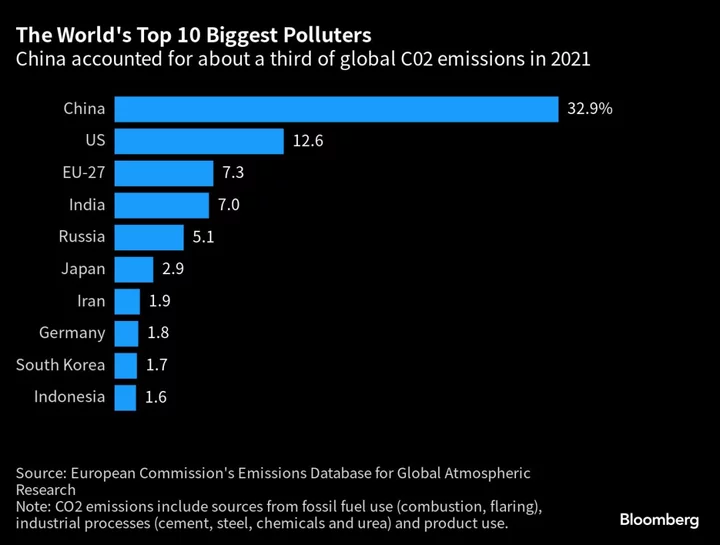The European Union has been accelerating its push to become the first climate-neutral continent. A new policy coming into force on Sunday will be a first step toward nudging other parts of the world to follow suit.
The measure will eventually place a levy on carbon-intensive imports so that European companies forced to comply with the continent’s strict climate laws won’t face unfair competition from producers outside the bloc. From Sunday, the start of the first phase of the so-called Carbon Border Adjustment Mechanism, importers from six carbon-intensive industries will be required to start reporting on their emissions.
“It will have strategic and financial implications for businesses around the world,” said Tim Figures, a senior expert at Boston Consulting Group. “Sunday is just the start of a long process but even if some companies are not impacted right away, they may be at a later stage, as the EU has an option of including more industries.”
The mechanism has already faced pushback from the EU’s major trading partners including Russia and China, who argue that it undermines the principles of free trade. It’s also added to trade tensions between the EU and US, with the Biden administration asking earlier this year for its steel and aluminum exports to be exempt.
But once it gets underway, the mechanism will be a key test as to whether carbon pricing can be established around the world as part of efforts to limit global warming. Under the second phase, which kicks in from January 2026, companies will be required to pay a gradually phased-in levy in line with prices in the EU’s carbon market. The benchmark EU emissions contract was at around 82 euros per metric ton of carbon on Friday.
The idea of putting a price on emissions at the European border has been floated over the past two decades but it wasn’t until earlier this year that the EU adopted a law mandating the levy as part of its ambitious green package. The EU has a binding goal of reducing greenhouse gases by at least 55% this decade from the level recorded in 1990 and achieving climate neutrality by the middle of the century.
Even the transitional phase of the border mechanism, before any taxes are put in place, will force producers in exporting countries to put a bigger focus on their carbon footprint, according to Figures.
“First, their products will be less competitive if they don’t reduce emissions and second, the prospect of paying a price on carbon in the EU will act as an incentive to invest in decarbonization,” Figures said. “That may also mean a change in trade patterns: carbon-intensive products will be harder to sell on the EU market so they could be shifted to third countries without carbon tariffs.”
The levy can be at least partially waived if a carbon tax has already been paid in the country where the goods were produced, adding an extra incentive for third countries to introduce their own green policies. Such a design also prevents the plan from being considered an illegal tariff under regulations drawn up by the World Trade Organization.
The EU still has a lot of work to do for the mechanism to operate smoothly, from ensuring compliance supervision in member states to introducing more detailed technical rules. It’s also set to face legal challenges at the WTO and disputes with trading parters.
Els Brouwers, Director of Energy, Climate and Economic Affairs at Essenscia, the lobby group for the Belgian chemical industry, described the mechanism as a “huge administrative burden for EU importers.” Companies have “a lot of questions” about how their exports will be protected, Brouwers said.
Environmentalists and economists, including Nobel Prize winner William Nordhaus, have long advocated carbon pricing because it allows countries to band together in a sort of “carbon club” to eliminate the problem of “free-riding” on the efforts of other nations. Germany has pitched its own idea for such a union alongside the Group of Seven.
It may also give momentum to nascent carbon markets in other countries, like the Chinese emissions market, and entice other countries to follow suit, according to Antoine Vagneur-Jones, head of trade and supply chains at BloombergNEF.
“It’s not going to lead to carbon pricing anywhere near to what the EU is doing anytime soon,” Vagneur-Jones wrote in a note. But in places where carbon pricing is politically palatable, “this could definitely act as something of a driver,” he said.

